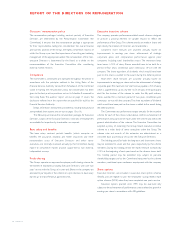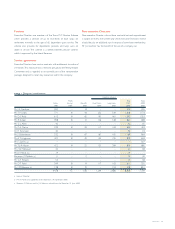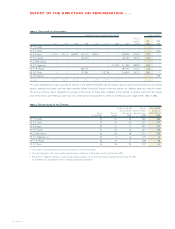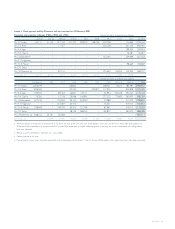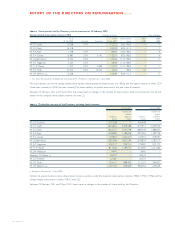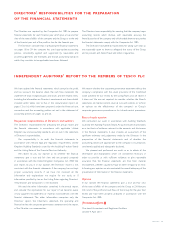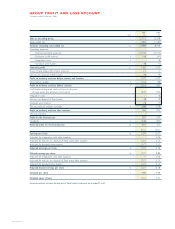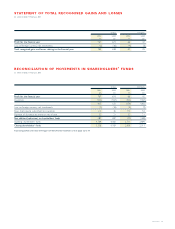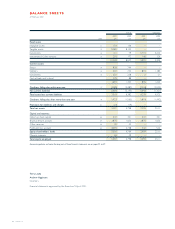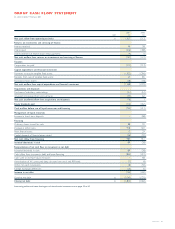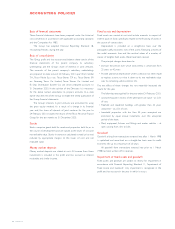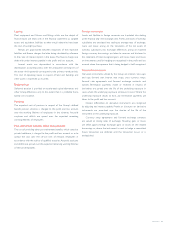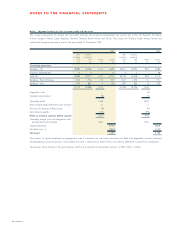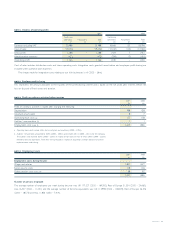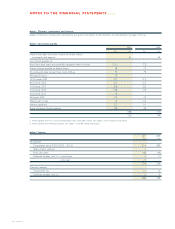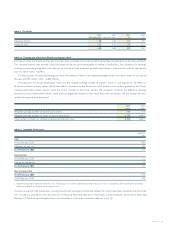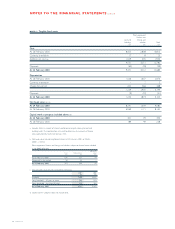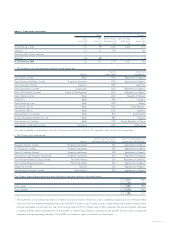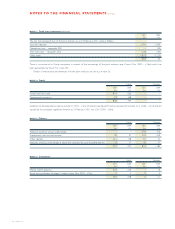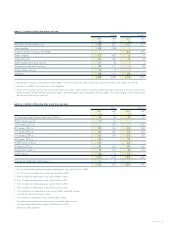Tesco 2001 Annual Report Download - page 24
Download and view the complete annual report
Please find page 24 of the 2001 Tesco annual report below. You can navigate through the pages in the report by either clicking on the pages listed below, or by using the keyword search tool below to find specific information within the annual report.22 TESCO PLC
Basis of financial statements
These financial statements have been prepared under the historical
cost convention, in accordance with applicable accounting standards
and the Companies Act 1985.
The Group has adopted Financial Reporting Standard 18,
‘Accounting Policies’, during the year.
Basis of consolidation
The Group profit and loss account and balance sheet consist of the
financial statements of the parent company, its subsidiary
undertakings and the Group’s share of interests in joint ventures.
The accounts of the parent company’s subsidiary undertakings
are prepared to dates around 24 February 2001 apart from Global
T.H., Tesco Polska Sp. z o.o., Tesco Stores C
˘R a.s., Tesco Stores SR
a.s., Samsung Tesco Co. Limited, Tesco Taiwan Co. Limited and
Ek-Chai Distribution System Co. Ltd which prepared accounts to
31 December 2000. In the opinion of the Directors it is necessary
for the above named subsidiaries to prepare accounts to a date
earlier than the rest of the Group to enable the timely publication of
the Group financial statements.
The Group’s interests in joint ventures are accounted for using
the gross equity method. As a result of a change in its financial
year end, the share of interests of joint ventures for the year to
24 February 2001 includes the results of the Tesco Personal Finance
Group for the ten months to 31 December 2000.
Stocks
Stocks comprise goods held for resale and properties held for, or in
the course of, development and are valued at the lower of cost and
net realisable value. Stocks in stores are calculated at retail prices and
reduced by appropriate margins to the lower of cost and net
realisable value.
Money market deposits
Money market deposits are stated at cost. All income from these
investments is included in the profit and loss account as interest
receivable and similar income.
Fixed assets and depreciation
Fixed assets are carried at cost and include amounts in respect of
interest paid on funds specifically related to the financing of assets in
the course of construction.
Depreciation is provided on a straight-line basis over the
anticipated useful economic lives of the assets. Following a review of
the useful economic lives and the residual values of a number of
classes of tangible fixed assets, these have been revised.
The principal changes have been to:
• Increase the period over which land premia is amortised from
25 years to 40 years.
• Provide additional depreciation where a decision has been made
to replace a store, to write it down to its net realiseable value
over its remaining useful economic life.
The net effect of these changes has not materially impacted the
results for the year.
The following rates applied for the year ended 24 February 2001:
• Land premia paid in excess of the alternative use value – at 2.5%
of cost.
• Freehold and leasehold buildings with greater than 40 years
unexpired – at 2.5% of cost.
• Leasehold properties with less than 40 years unexpired are
amortised by equal annual instalments over the unexpired
period of the lease.
• Plant, equipment, fixtures and fittings and motor vehicles – at
rates varying from 10% to 33%.
Goodwill
Goodwill arising from transactions entered into after 1 March 1998
is capitalised and amortised on a straight-line basis over its useful
economic life, up to a maximum of 20 years.
All goodwill from transactions entered into prior to 1 March
1998 has been written off to reserves.
Impairment of fixed assets and goodwill
Fixed assets and goodwill are subject to review for impairment in
accordance with Financial Reporting Standard 11, ‘Impairment of
Fixed Assets and Goodwill’. Any impairment is recognised in the
profit and loss account in the year in which it occurs.
ACCOUNTING POLICIES


